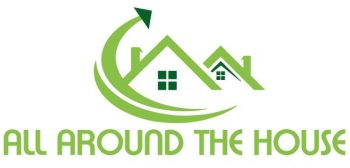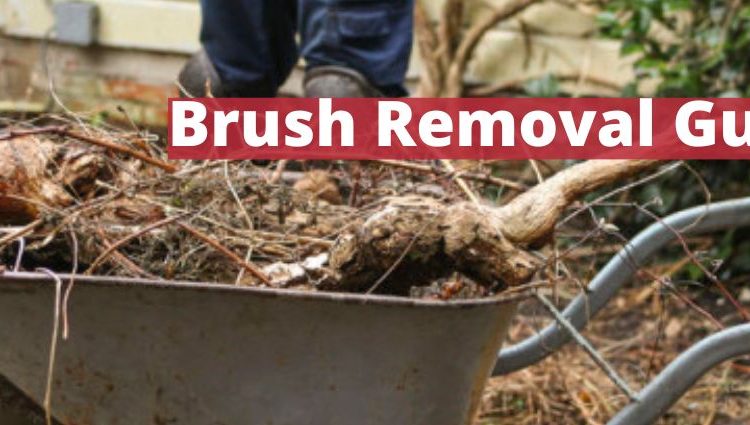The sight of overgrown brush can be both daunting and enticing. While the urge to simply clear it all away with brute force might be strong, a responsible approach to brush removal is crucial to ensure efficiency, safety, and environmental responsibility. This comprehensive guide will equip you with the knowledge and tools necessary to successfully reclaim your land, leaving behind a healthier and more sustainable ecosystem.
Planning and Preparation: The Foundation of Successful Brush Removal
 Before even reaching for your tools, meticulous planning is paramount. Begin by meticulously assessing the terrain. Measure the area to be cleared and meticulously evaluate the density and variety of the brush. This information is crucial for determining the required equipment and manpower. Remember, safety comes first. If the project appears overwhelming, consider seeking assistance from experienced professionals.
Before even reaching for your tools, meticulous planning is paramount. Begin by meticulously assessing the terrain. Measure the area to be cleared and meticulously evaluate the density and variety of the brush. This information is crucial for determining the required equipment and manpower. Remember, safety comes first. If the project appears overwhelming, consider seeking assistance from experienced professionals.
Planning and Preparation:
- Assess the size and density of the brush: This determines the required equipment and manpower.
- Check for protected species or nesting wildlife: Seek proper permits or consult wildlife experts if needed.
- Identify disposal methods: Local regulations may guide options like composting, chipping, or controlled burns.
Ecological Awareness: Protecting the Balance
Next, conduct a thorough ecological survey. Look for signs of protected species, such as rare plants, nesting birds, or endangered wildlife. Consult with local wildlife experts if necessary, and acquire any necessary permits to avoid legal ramifications and unintended ecological harm.
Understanding Regulations: Navigating the Rules
Researching local regulations regarding brush disposal is crucial. Some communities designate specific areas for composting or chipping, while others may allow controlled burns with proper permits. These regulations exist to protect the environment and ensure responsible land management practices.
Gearing Up for the Task: Tools of the Trade
The right tools are essential for efficient and safe brush removal. For small, localized areas with scattered shrubs, a good pair of loppers, pruning shears, and a handsaw are sufficient. However, as the area and density of the brush increase, consider investing in brush cutters, chainsaws, or specialized removal equipment. If you’re unfamiliar with the operation of larger equipment, renting from a reputable source is an option. However, it’s crucial to undergo proper training from the rental company before starting work.
Choosing the Right Tools:
- For small areas: Loppers, pruning shears, and hand saws are sufficient.
- For larger areas: Brush cutters, chainsaws, or specialized removal equipment might be necessary. Consider renting large equipment if needed.
- PPE is crucial: Wear gloves, eye protection, long sleeves, and sturdy boots for optimal safety.
Safety First: A Priority Never Compromised
Never underestimate the importance of personal protective equipment (PPE). Wear heavy-duty gloves, eye protection, long sleeves, and sturdy boots at all times. Consider using hearing protection when operating loud machinery like chainsaws. Remember, safety is not a suggestion; it’s an absolute necessity.
Check Out: Personal Protection Equipment
Clearing the Path: A Step-by-Step Guide
 The removal process starts with the larger trees and shrubs. Use a chainsaw or axe (depending on the size) to carefully cut them down at the base, ensuring a safe falling direction. Clear brush piles with a rake and then tackle the remaining smaller brush and debris using appropriate tools like loppers and pruning shears. Consider grinding or chipping the cleared material, which reduces volume and creates valuable mulch for landscaping projects. This mulch can be used to suppress weed growth and enrich the soil in other areas of your property.
The removal process starts with the larger trees and shrubs. Use a chainsaw or axe (depending on the size) to carefully cut them down at the base, ensuring a safe falling direction. Clear brush piles with a rake and then tackle the remaining smaller brush and debris using appropriate tools like loppers and pruning shears. Consider grinding or chipping the cleared material, which reduces volume and creates valuable mulch for landscaping projects. This mulch can be used to suppress weed growth and enrich the soil in other areas of your property.
Removal Techniques:
- Start with larger trees or shrubs: Cut them down at the base, ensuring safe falling direction.
- Clear smaller brush and debris: Use appropriate tools to cut and pile material for disposal.
- Consider grinding or chipping: This reduces volume and creates useful mulch.
Responsible Disposal: Respecting the Environment
Once the brush is cleared, responsible disposal is crucial. Familiarize yourself with local regulations and dispose of the material accordingly. Avoid illegal dumping or indiscriminate burning. Many communities offer yard waste recycling programs, which are a fantastic way to divert material from landfills and give it a second life. Remember, even the smallest actions contribute to a healthier environment.
Disposal and Cleanup:
- Follow local regulations: Dispose of brush responsibly, avoiding illegal dumping or burning.
- Consider recycling options: Many communities have programs for yard waste recycling.
- Leave the area clean and safe: Remove debris and level the cleared area if desired.
Post-Removal Maintenance: A Sustainable Future
 Clearing the brush is only the beginning of the journey. To prevent the area from quickly returning to its overgrown state, implement weed control measures. Spreading mulch or planting desired and native vegetation can further discourage unwanted growth. Monitor the area regularly for signs of invasive species or regrowth and address them promptly. Early intervention prevents the spread of harmful plants and ensures the long-term health of your land.
Clearing the brush is only the beginning of the journey. To prevent the area from quickly returning to its overgrown state, implement weed control measures. Spreading mulch or planting desired and native vegetation can further discourage unwanted growth. Monitor the area regularly for signs of invasive species or regrowth and address them promptly. Early intervention prevents the spread of harmful plants and ensures the long-term health of your land.
Post-Removal Maintenance:
- Prevent regrowth: Apply weed control measures or replant with desired vegetation to discourage unwanted growth.
- Monitor the area: Watch for potential invasive species or unwanted regrowth and address them promptly.
Beyond the Brush: Embracing a Sustainable Approach
By following these comprehensive steps and prioritizing both safety and environmental responsibility, you can successfully reclaim your land from the clutches of overgrown brush. Remember, the process requires planning, preparation, and a commitment to sustainable practices. With the right approach, you can not only achieve your goals but also leave a positive impact on the surrounding environment. You can become a steward of your land, fostering a healthier ecosystem for generations to come.



Comments are closed, but trackbacks and pingbacks are open.